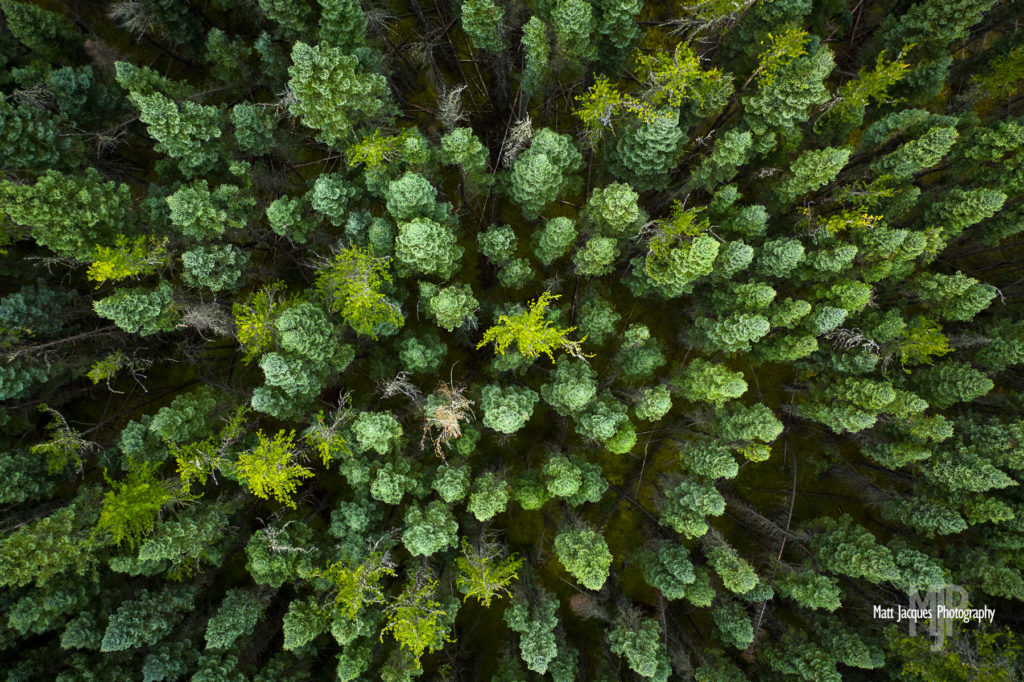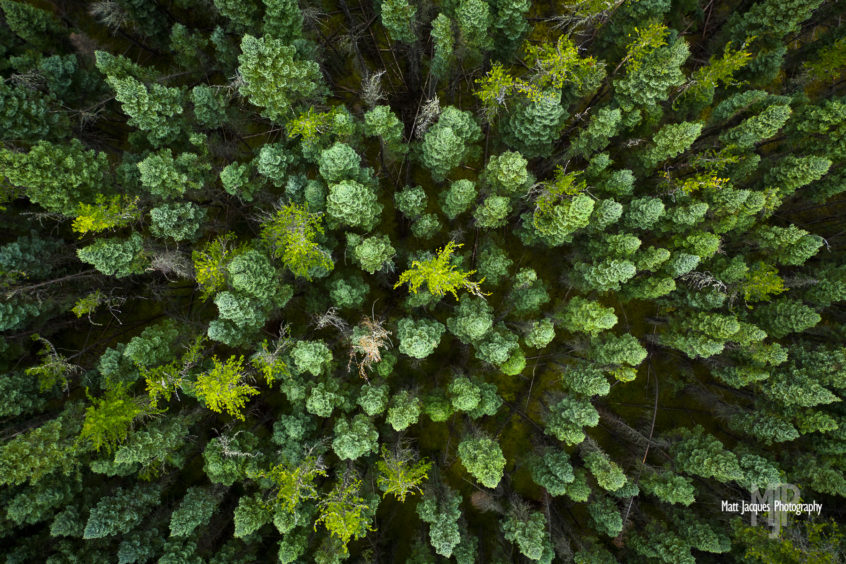By Esprit Farmer
What is Carbon Sequestration?
The carbon cycle is a global phenomenon where carbon is released from ‘sources,’ like fires or burning coal, and then absorbed by ‘sinks,’ like trees and bogs. This is called carbon sequestration, and it acts as a balance. In a healthy environment, about the same amount of carbon released is then absorbed, helping to keep the atmosphere clean. A healthy balance is necessary because excess atmospheric carbon contributes to climate change.
Why is Carbon Sequestration Important?
Carbon dioxide (CO2), along with other gases like methane (CH4), are released from our daily activities such as breathing, driving, and cooking. We also produce it indirectly: for example, the cows we eat produce methane, and our lights are powered by burning natural gas (which is derived from fossil fuels). The carbon we release into the atmosphere is referred to as our ‘carbon footprint.’
Globally, our carbon footprint has become beyond excessive. From activities like burning fossil fuels and food production, we release around 9.4 gigatonnes of carbon into the atmosphere every year. Of course, carbon is being released anyway from natural sources like forest fires and plant decomposition. So why does our ‘carbon footprint’ matter?
As humans produce more CO2 and continue to remove trees and other carbon sinks, the balance is upset and CO2 accumulates in the atmosphere. This is the driving force of climate change.
Saskatchewan’s boreal forest as a carbon sink



Plants and trees absorb carbon dioxide from the air and use it to make sugars through the process of photosynthesis. In this process, a byproduct is the oxygen that we breathe. This cycle demonstrates how vital trees are to supporting all forms of life that depend on oxygen.
Saskatchewan’s boreal forest is no exception. With Saskatchewan making up roughly 5% of the world’s boreal forest, our forest sequesters over 21 billion tonnes of carbon annually.
This carbon is stored not only when the trees sequester it, but also when these trees are preserved in muskeg or for human uses.
While the boreal forest is a carbon sink, it also releases carbon. This occurs naturally from forest fires, and as trees and animals die and decompose. Although this releases carbon, as the forest grows back and saplings and trees establish, carbon again begins to be sequestered.
However, due to climate change, the boreal forest has been experiencing an increase in the frequency and intensity of forest fires, droughts, and temperature-related stress. While these are natural cycles forests experience, the intensity and rate at which the forest is being impacted are unnatural.
There a few things to be done to ensure the health and prosperity of our forests, and it begins with proper forestry management.
Read here what CPAWS-SK is doing to help regulate forestry and protect Saskatchewan’s boreal forest: Saskatchewan forests
Muskeg



Muskeg is a peat bog that is often found in woods, grasslands, and near bodies of water. Its soil is saturated with water, resulting in a thick layer of mud and partially-decomposed organic matter.
Saskatchewan’s muskeg plays a key role in our ecosystem. It acts as a habitat for a wide variety of animals, including the endangered caribou. To read what CPAWS is doing to help the Woodland Caribou, click here.
The muskeg in the boreal forest holds cultural significance for Saskatchewan’s Indigenous communities and provides both food and traditional medicine. As well, the peat layer of the muskeg can be burnt and used for fertilizer. This connection to muskeg strengthens security and independence in northern and remote communities, as it provides a valuable resource.
Muskeg is fundamental to the carbon storage process. When plants, trees, and animals decompose in the muskeg, they break down and are stored in a thick bottom layer of mud called ‘peat.’ The carbon stored in the plants and animals is not released into the atmosphere, instead, it is conserved in the ground.
Because muskeg stores so much carbon, it is important to leave it intact. When the muskeg becomes disturbed, methane and CO2 are released into the atmosphere.
Peat is often harvested to use for fertilizer and filtration, however, this process has a very high carbon footprint and therefore must be closely regulated. Furthermore, CO2 is released from muskeg when it is disrupted during construction projects. This is an issue for many oil and gas projects, which are often in areas where muskeg is located.
Anthropogenic changes to muskeg also impact the wildlife that rely on it. An example of this is coal burning, which has increased metal concentrations in muskeg peat. Birds and fish who live near are directly exposed to toxic metals, such as lead.
Grasslands



Soil is an excellent carbon sink. In fact, soil contains more carbon globally than plants and the atmosphere combined. This carbon storage is important in a Saskatchewan context, as 36% of the province consists of both grassland and cropland.
However, it is not to say all of this 36% of grassland and cropland are adequate at sequestering carbon. Intensive agricultural practices that involve the use of fossil fuels and high dosage of fertilizers store 25% less carbon than traditionally managed fields with high biodiversity.
The fact that native grasslands are able to retain so much carbon is just another reason why protecting the last remaining bit in Saskatchewan is dire. Not only will this ensure carbon remains in the ground, but also the protection of endangered biodiversity that specifically rely on natural grasslands for habitat requirements.
On top of protection, it is also important to ensure that proper management is in place for these grasslands. It has shown that when properly grazed, cattle can help soil health and thus vegetation growth. When soils and vegetation are healthy, carbon is sequestered both underground and in the plants that are growing. Learn more about the importance of grassland management strategy here.
Permafrost
‘Permafrost’ refers to the permanently frozen layer of ground that exists across the arctic. In cold places, like northern Canada, water in the ground freezes solid year-round. Permafrost exists in northern Saskatchewan in the ‘sporadic discontinuous’ zone, meaning permafrost only forms in sheltered areas, like the north side of a hill.
Permafrost traps soil carbon, as well as any decomposed material, in the frozen ground. Often, this carbon will be stored underground for thousands of years!
As climate change affects Canada’s north, its impact on permafrost is particularly devastating. An increase in annual mean temperature causes permafrost to melt. A clear impact of this is ‘warped’ land and erosion: as thawing happens unevenly, the ground shifts. This often displaces northern communities.
Because of the massive amount of carbon stored in permafrost, the effects of climate change are especially dire. As more permafrost melts, more carbon will be released into the atmosphere causing a ‘positive feedback loop.’
CPAWS SK is working hard to protect all of these natural ecosystems and more, for the benefit of the people and animals living there, and for our carbon footprint.
Resources:
Climate Change & Boreal Forests | Global Forest Atlas
Continuous and Discontinuous permafrost
Forest type and age | Conserving Biological Diversity
New research on carbon sequestration and grassland
When Permafrost Melts, What Happens to All That Stored Carbon?
8 facts about Canada’s boreal forest | Natural Resources Canada

